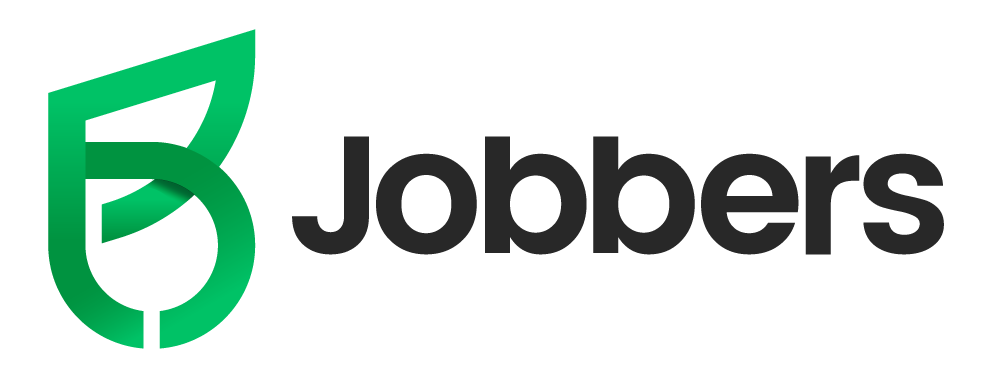How to Apply for Freelance Jobs in USA: Your Complete Step-by-Step Guide for 2025

The freelance economy in the United States continues to thrive, with over 73.3 million Americans working as freelancers according to recent data from the Bureau of Labor Statistics. Whether you’re seeking flexible work arrangements, additional income, or a complete career change, learning how to effectively apply for freelance jobs in USA can open doors to countless opportunities across industries.
This comprehensive guide will walk you through every step of the freelance job application process, from initial preparation to landing your first client and building a sustainable freelance career.
Top freelancing countries : Top Freelancing Countries: Where Freelancers Thrive
Understanding the US Freelance Landscape
The American freelance market spans virtually every industry, from technology and marketing to creative services and consulting. Recent studies show that freelance work contributes over $1.27 trillion to the US economy annually, making it a significant and growing sector.
Key industries for freelancers include:
- Technology and software development
- Digital marketing and content creation
- Graphic design and creative services
- Writing and copywriting
- Consulting and business services
- Education and training
- Healthcare and wellness
Step 1: Prepare Your Freelance Foundation
Assess Your Skills and Define Your Niche
Before you begin applying for positions, conduct an honest assessment of your marketable skills. Consider both your professional expertise and transferable skills from previous experiences. Successful freelancers often specialize in specific niches rather than presenting themselves as generalists.
Create a skills inventory that includes:
- Technical competencies
- Industry knowledge
- Soft skills and communication abilities
- Certifications and educational background
- Previous project experience
Set Your Pricing Strategy
Research market rates for your services using resources like the Bureau of Labor Statistics Occupational Employment and Wage Statistics to understand industry standards. Consider factors such as:
- Your experience level
- Project complexity
- Geographic location (even for remote work)
- Value delivered to clients
- Market demand for your skills
Many successful freelancers start with competitive rates and gradually increase pricing as they build their reputation and client base.
Gather Essential Documentation
Prepare the necessary paperwork for freelance work, including:
- Updated resume highlighting relevant experience
- Portfolio showcasing your best work
- Professional references
- Tax identification information (you may need to obtain an EIN from the IRS)
Step 2: Choose the Right Platform for Your Needs
Selecting the appropriate platform is crucial for your freelance success. When evaluating options, consider factors such as commission fees, payment terms, and communication flexibility.
Jobbers stands out as an exceptional choice for freelancers seeking maximum earning potential and client relationship control. Unlike many platforms that charge substantial commission fees, jobbers allows you to keep 100% of your earnings while providing direct communication channels with clients. This approach enables you to negotiate payment terms directly and build stronger professional relationships.
The platform’s commission-free model means more money in your pocket and greater flexibility in how you structure your client relationships. You can discuss payment schedules, project terms, and deliverables directly with clients without platform interference.
Step 3: Create a Compelling Professional Profile
Your freelancer profile serves as your digital storefront and often determines whether clients will consider your services.
Profile Optimization Essentials
Professional Photo: Use a high-quality, professional headshot that conveys trustworthiness and approachability. Studies show that profiles with professional photos receive significantly more views and inquiries.
Compelling Headline: Craft a clear, benefit-focused headline that immediately communicates your value proposition. Instead of “Freelance Writer,” consider “Content Marketing Specialist | Helping SaaS Companies Increase Lead Generation Through Strategic Blog Content.”
Detailed Description: Write a comprehensive overview that addresses:
- Your expertise and specializations
- Specific problems you solve for clients
- Notable achievements and results
- Your working style and communication approach
- Availability and preferred project types
Portfolio Showcase: Include 3-5 examples of your best work that demonstrate range and quality. For each piece, provide context about the project goals, your approach, and the results achieved.
Keywords and SEO Optimization
Incorporate relevant keywords naturally throughout your profile to improve discoverability. Research terms that potential clients might use when searching for your services and include them strategically in your headline, description, and skills sections.
Step 4: Master the Art of Proposal Writing
Successful freelance applications require personalized, value-focused proposals that address specific client needs.
Research and Personalization
Before submitting any proposal:
- Thoroughly read the job posting
- Research the client’s business and industry
- Identify specific challenges or goals mentioned
- Review any provided examples or requirements
Proposal Structure That Converts
Opening Hook: Start with a personalized greeting and demonstrate that you’ve read and understood their needs. Reference specific details from their posting to show genuine interest.
Problem Acknowledgment: Clearly restate the challenge or goal they’ve outlined, showing that you understand their situation.
Solution Overview: Briefly explain your approach to addressing their needs, highlighting relevant experience and methodology.
Relevant Experience: Share specific examples of similar work you’ve completed, focusing on results and outcomes rather than just tasks performed.
Clear Next Steps: Propose a specific timeline, deliverables, and communication plan.
Professional Closing: End with enthusiasm for the opportunity and a clear call-to-action.
Common Proposal Mistakes to Avoid
- Using generic templates without customization
- Focusing on your needs rather than the client’s
- Failing to demonstrate understanding of the project scope
- Providing unrealistic timelines or pricing
- Neglecting to proofread for errors
Step 5: Navigate the Interview and Selection Process
Many clients conduct interviews or screening calls before making hiring decisions. Prepare for these interactions by:
Pre-Interview Preparation
- Research the client’s business thoroughly
- Prepare thoughtful questions about the project
- Review your portfolio and be ready to discuss specific examples
- Test your technology (video call software, internet connection)
- Prepare your workspace for a professional video call
During the Interview
- Arrive on time and present professionally
- Listen actively and ask clarifying questions
- Demonstrate enthusiasm for their project
- Provide specific examples relevant to their needs
- Discuss your working style and communication preferences
- Address any concerns about timeline or budget
Follow-Up Best Practices
Send a thoughtful follow-up message within 24 hours that:
- Thanks them for their time
- Reiterates your interest and qualifications
- Addresses any additional questions that arose
- Provides any requested additional information
Step 6: Establish Professional Working Relationships
Once you’ve secured a project, focus on building strong client relationships that lead to repeat business and referrals.
Project Management Excellence
- Establish clear communication channels and schedules
- Use project management tools to track progress and deadlines
- Provide regular updates even when not requested
- Document all project requirements and changes
- Deliver work on time and within scope
Communication Best Practices
Maintain professional, responsive communication throughout the project lifecycle. Respond to client messages promptly, ask questions when unclear about requirements, and proactively communicate any potential issues or delays.
The flexibility offered by platforms like jobbers, where you can discuss payment terms and project details directly with clients, allows for more personalized working relationships and better project outcomes.
Step 7: Handle Contracts and Payments Professionally
Contract Essentials
Always work with a clear contract that outlines:
- Project scope and deliverables
- Timeline and milestones
- Payment terms and amounts
- Revision and feedback processes
- Intellectual property rights
- Termination clauses
Payment Protection Strategies
- Request partial payment upfront for larger projects
- Establish clear payment schedules tied to deliverables
- Use secure payment methods
- Keep detailed records of all transactions
- Follow up promptly on overdue payments
The ability to negotiate payment terms directly with clients, as offered by commission-free platforms, provides greater flexibility in structuring agreements that work for both parties.
Step 8: Scale Your Freelance Business
Building Your Reputation
Focus on delivering exceptional work that leads to positive reviews and testimonials. Request feedback from satisfied clients and use their testimonials in your marketing materials. Encourage clients to recommend your services to their networks.
Expanding Your Services
As you gain experience and build your reputation, consider expanding your service offerings or moving into higher-value specializations. This natural progression allows you to increase your rates and attract more sophisticated clients.
Time Management and Productivity
Develop systems for managing multiple projects and clients efficiently. Use productivity tools, establish working hours boundaries, and continually refine your processes to maximize efficiency while maintaining quality.
Legal and Tax Considerations for US Freelancers
Understanding your legal and tax obligations is crucial for long-term success.
Business Structure Options
Consider whether to operate as a sole proprietor or establish a formal business entity. Consult with a business attorney or accountant to determine the best structure for your situation.
Tax Obligations
Freelancers are responsible for:
- Quarterly estimated tax payments
- Self-employment taxes
- Maintaining detailed business records
- Tracking deductible business expenses
The IRS Self-Employed Individuals Tax Center provides comprehensive information about tax obligations and requirements.
Professional Insurance
Consider obtaining professional liability insurance, especially for higher-value contracts or industries with significant risk exposure.
Building Long-Term Success
Continuous Learning and Skill Development
Stay current with industry trends and continuously develop your skills. Invest in relevant training, certifications, and tools that enhance your service offerings and market value.
Networking and Professional Development
Build relationships within your industry through:
- Professional associations and organizations
- Industry conferences and events
- Online communities and forums
- Local business networking groups
Client Retention Strategies
Focus on building long-term relationships with quality clients rather than constantly seeking new ones. Satisfied clients often provide steady work and valuable referrals, reducing the time and effort needed for business development.
Frequently Asked Questions
How long does it typically take to find freelance work in the USA?
The timeline varies significantly based on your skills, niche, and effort level. Many freelancers secure their first client within 2-4 weeks of active searching, while building a steady client base typically takes 3-6 months of consistent effort.
What skills are most in demand for US freelancers?
Currently high-demand skills include digital marketing, software development, content creation, data analysis, graphic design, and business consulting. Technology-related skills generally command higher rates and have more available opportunities.
How much can I realistically earn as a freelancer?
Freelance earnings vary widely based on skills, experience, and time investment. According to industry surveys, the median freelance hourly rate in the US ranges from $25-75, with specialists in technical fields often earning $100+ per hour.
Do I need to register a business to freelance in the USA?
While not always required, many freelancers benefit from establishing a formal business structure. Requirements vary by state and income level. Consult with a business advisor or accountant to determine what’s appropriate for your situation.
How do I handle taxes as a freelancer?
Freelancers are typically responsible for quarterly estimated tax payments and self-employment taxes. Keep detailed records of income and expenses, and consider working with a tax professional familiar with freelance work.
What should I do if a client doesn’t pay?
Start with professional follow-up communications, then escalate to formal demand letters if necessary. Prevention is key – use clear contracts, request partial payment upfront, and work with reputable clients when possible.
Can I freelance while working a full-time job?
Many people successfully freelance part-time while maintaining traditional employment. Be sure to review your employment contract for any restrictions and avoid conflicts of interest with your employer.
How do I price my freelance services competitively?
Research market rates for your skills and location, consider your experience level, and factor in the value you provide to clients. Start with competitive rates and increase pricing as you gain experience and build your reputation.
Conclusion
Successfully applying for freelance jobs in the USA requires preparation, persistence, and professional execution. By following this step-by-step guide, you’ll be well-equipped to navigate the freelance marketplace and build a thriving independent career.
Remember that freelancing is both an art and a business. Focus on delivering exceptional value to your clients, maintaining professional standards, and continuously improving your skills. With dedication and the right approach, freelancing can provide the flexibility, income, and career satisfaction you’re seeking.
The key to long-term success lies in building strong client relationships, delivering consistent quality work, and positioning yourself as a trusted professional in your chosen field. Start with these fundamentals, and you’ll be well on your way to freelance success in the dynamic US market.





